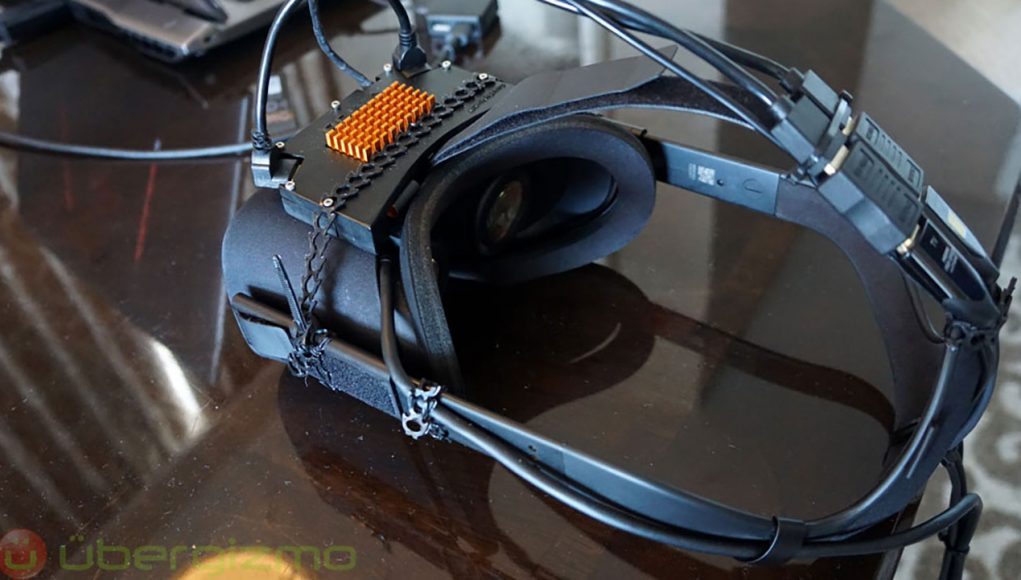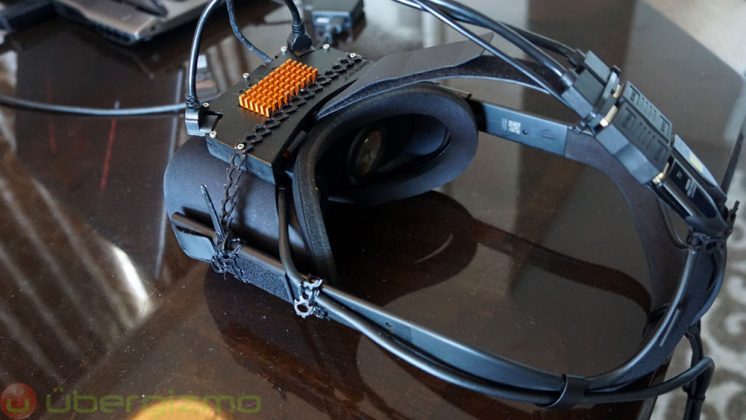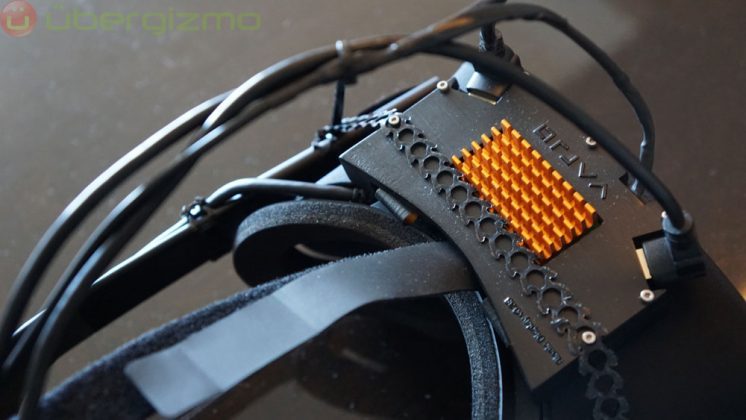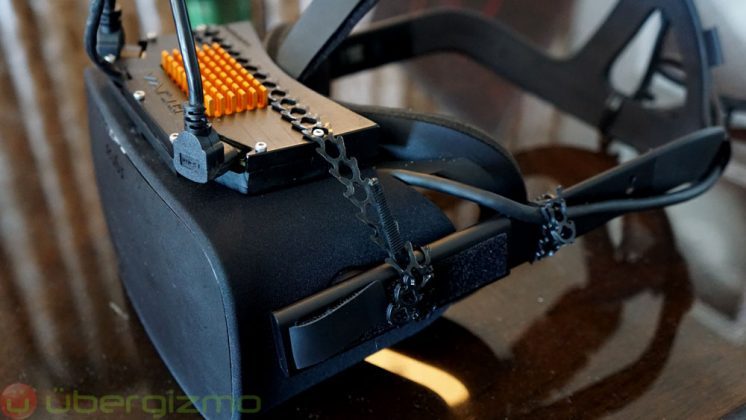Varjo Technologies, a Helsinki-based startup now out of stealth, recently demonstrated what it calls the world’s first human eye-resolution headmounted display. Intended for its own swath of Varjo-branded headsets, the new display configuration promises “unprecedented resolution of VR and AR content limited only by the perception of the human eye itself.”
According to a hands-on by Tech Crunch, the headset packs a pair of high-resolution Sony MicroOLED displays measuring 0.7 inches diagonally that boast 3,000 pixels per inch (PPI)—a significant jump from Oculus Rift of HTC Vive’s 447-461 PPI. Microdisplays don’t typically provide an acceptable field of view (FOV) for the purposes of VR, but Varjo is combining a few methods to provide the pixel-dense picture to an entire 100 degree FOV.
As reported by Tech Crunch, these microdisplays “fill up about a 20-degree field of view which is reflected off of mirrors in the headset while the wider scene is displayed on a more normal resolution display in the background.”
Codenamed 20|20, Varjo (meaning ‘shadow’ in Finnish) built their early prototype inside of a hacked Oculus Rift by a team of optical scientists, creatives and developers who formerly occupied top positions at Microsoft, Nokia, Intel, Nvidia and Rovio.
Billed as a “bionic display,” the prototype shown to Tech Crunch featured a “fixed focus display” that was set at the center point of the users vision, but the company says its currently building systems that will dynamically adjust the microdisplay-reflected image to your gaze thanks to the future addition of integrated eye-tracking technology.
 For now, the headset is destined for professional users, as the technology will no doubt require a top-in-class computer due to the graphical constraints of delivering rendered images that can make use of the display’s high pixel density. It’s also difficult to say how a hardware-based solution will stand up to everyday use since it requires lenses to physically move every time your eye shifts position.
For now, the headset is destined for professional users, as the technology will no doubt require a top-in-class computer due to the graphical constraints of delivering rendered images that can make use of the display’s high pixel density. It’s also difficult to say how a hardware-based solution will stand up to everyday use since it requires lenses to physically move every time your eye shifts position.
| Comparative matrix | Effective resolution | Field of view |
|---|---|---|
| Varjo 20|20 | 70 MP | 100° |
| Oculus, Vive | 1.2 MP | 100° |
| VR in 5 years * | 16 MP | 140° |
| HoloLens | 1 MP | 32° |
| ODG R9 | 2 MP | 50° |
| Meta II | 1.8 MP | 100° |
| * Prediction 2016 by Oculus Chief Scientist Michael Abrash at Oculus Connect 3 | ||
“Varjo’s patented display innovation pushes VR technology 10 years ahead of the current state of-the-art, where people can experience unprecedented resolution of VR and AR content limited only by the perception of the human eye itself,” said Urho Konttori, CEO and founder of Varjo Technologies. “This technology, along with Varjo VST, jump-starts the immersive computing age overnight – VR is no longer a curiosity, but now can be a professional tool for all industries.”
The high resolution display technology will be shipping in Varjo-branded products specifically for professional users and applications starting in late Q4, 2017.










